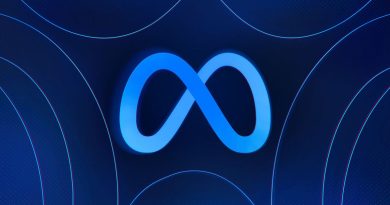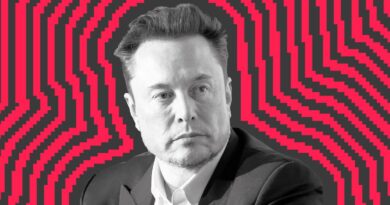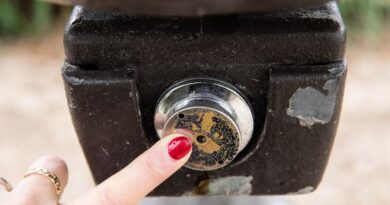Ionna, the EV charging company backed by seven automakers, is beginning to take shape
Late last year, seven automakers — BMW, Honda, General Motors, Hyundai, Kia, Mercedes-Benz, and Stellantis — announced plans for a joint venture to build easy-to-access public DC fast charging infrastructure in the US and Canada.
The resulting company, Ionna, announced today that its headquarters will be in Durham, North Carolina and feature what the company is calling a “Quarterback Lab,” designed to help each participating car company address charging issues following software updates, tackle customer issues closer to the source, and offer interoperability testing. It was a sign that the new venture was thinking critically about how to fix EV charging in the US.
The company also hinted at adding “new partners” to the Ionna consortium
The company also hinted at adding “new partners” to the Ionna consortium, but it’s unclear whether those will be additional automakers, local and state governments, utilities, or retail partners as the company builds out its offerings
There will be a total of seven of these labs all around the country, and Ionna plans to have a few DC fast chargers up and running by the end of 2024, with additional plans for more than 30,000 chargers in dense urban areas, along highway corridors, and along “vacation routes,” according to the company.
The company has promised to bring 203 jobs to the Durham area as part of the $10.1 million dollar investment. The site beat out a location in Texas.
A new model for charging
The leadership at Ionna says it’s rethinking the way that it tackles public fast charging, with a tighter focus on customer and driver needs. After all, charging has now become part of the product experience and one that is in dire need of attention from the automakers.
Ionna says it sees the process of electrification in four stages. The first was when the first EVs, like the Nissan Leaf and the Chevy Volt, hit the market in the early aughts. The second was when companies like Tesla and EVGo began building out charging networks, both closed and open. The third, interestingly enough, they see as post-covid when automakers reported a softening of demand for EVs, and early adopters began to have issues with the reliability of the public charging infrastructure. IONNA says we’re currently in the fourth stage, where a robust network of chargers and amenities is necessary in order to fully electrify transportation.
That network will feature things like retail offerings, food, restrooms, and covered charging for EVs, an experience that will make charging more analogous to what most Americans are used to at more than 100,000 gas stations across the country.
A team from inside the industry and out
Ionna has spun up a team relatively quickly, and most employees, including the top brass, started just a few months ago. Most of the top leadership has a background in EV charging, automotive, and energy and infrastructure, and the company says it’s looking both inside and out for talent.
Ionna CEO Seth Cutler is no stranger to the EV charging industry
Ionna CEO Seth Cutler is no stranger to the EV charging industry. He started his career at GE Energy, where he worked on EV charging infrastructure during the days when the Nissan Leaf and the Chevy Volt were the only electrified vehicles on the market. From there, he joined Electrify America, where he held the title of chief engineer and worked on product development and deployment of EA’s ultra-fast DC charging stations. He then joined EV Connect, where he was COO, and in February of this year, he became CEO at IONNA.
Chief product officer Ricardo Stamatti hails from the OEM side of the industry and is a founding member of Ionna. Prior to joining the company, he spent 10 years working through the layers of business units at Stellantis and spent a year as SVP and global head of Stellantis Energy. Other members of the C-suite include former BP CFO Derek Rush and Shankar Muthukumar, who comes from Mortenson, a builder, developer and provider of energy and engineering services.
Public funding and politics
When it first launched, Ionna said it would leverage federal funding to build out the network. The Bipartisan Infrastructure Law of 2021 allocated $7.5 billion for EV charging, $5 billion of which for building a “backbone” of high-speed chargers along America’s major roads and interstates through the National Electric Vehicle Infrastructure (NEVI) program.
But NEVI has come under political fire recently, as only seven chargers have been deployed nationwide. NEVI funds are administered by the states, and critics point to that as one of the many factors delaying the rollout. Plans for Ionna to leverage NEVI funds have changed slightly, according to the company.
NEVI has come under political fire recently
The billions of federal dollars available through the NEVI program “will eventually find their way into charge points on the ground,” Stamatti told The Verge via email. “We are confident the process will adjust accordingly and be helped by the improved quality of new grant seekers stepping in like Ionna. Ionna will be there when that happens, still deploying to that 30K+ goal, but we are also fully funded to go ahead and deploy now without having to depend on NEVI.”
While Ionna leadership says it’s not concerned about the potential for upheaval in the November elections that could put a significant damper on EV adoption and infrastructure, the company is keeping a close eye on things. It says it’s fully committed to the future of EV adoption and building out infrastructure that offers amenities that EV drivers want, alongside a robust fast charging network that meets customers where they need it most.





